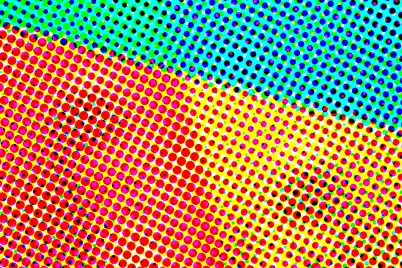

07584-


SPOT THE DIFFERENCE
Printing -
Our world is full of colour, and how we use that colour reflects many different aspects of our lives. Clothes for instance to portray our image or home décor to reflect our lifestyle. The use of colour has a strong visual impact.
This is the case with graphic design too, whether the outcome is for digital or print. Colours are important, they need to attract people’s attention, so before commencing with a piece of artwork let’s look at how colour can work for you.
There are two colour models available, the first being RGB and the second is CMYK.
What is the difference between CMYK & RGB?
The main difference is where these two colour models are used. RGB is used primarily for digital work, whether that be video, websites or social media. CMYK is more commonly used for print such as magazines, posters, packaging etc.
What is RGB?
RGB consists of 3 x colours – Red, Green & Blue hence the initials RGB. This colour model has been around since the 1800’s and is the result of a colour and light concept developed by the physicists Thomas Young, Hermann Helmholtz and James Maxwell. Early photographers made use of the cathode ray tubes developed from this concept which led to their wide usage in early television sets before they were replaced more recently by flat screen TV’s.
RGB works by combining light with the primary colours of red, blue and green to create a wide variety of colours. It is due to the addition of light that the colours produced are vibrant meaning that they are well suited for digital applications. This means that it is well suited to creating eye-
What is CMYK?
CMYK stands for Cyan, Magenta, Yellow & Black – (Interestingly, ‘K’ is used for Black so that it isn’t confused with any other colour beginning with the letter ‘B’ such as Blue). If you consider your desktop printer, these are the colour cartridges used to print your documents and therefore they utilise the CMYK model. CMYK is used by professional printers for anything from magazines to billboard posters. The 4 x individual colours that make up the CMYK model are used in differing percentages to create a multitude of colour options. They can therefore be applied to most surfaces and substrates resulting in a fairly consistent colour reproduction. However, as with RGB, it does have a downside in that CMYK appears dull when used in digital format and should therefore be avoided.
In Conclusion
The RGB colour model is the best one to use for vibrant and exciting colours when working with digital formats. CMYK is should be reserved for printing, where equally impactful colours to RGB can be created on a physical surface.
Please note that the views, thoughts, and opinions expressed in this article belong solely to the author, and not necessarily to any other group or individual. To ensure you are fully compliant with all current legislation, please take legal/professional advice and do not rely solely on the information provided in these articles.

Copyright © 2018-
Terms of Use | Privacy Policy, GDPR & Cookie Policy | Trading Terms





